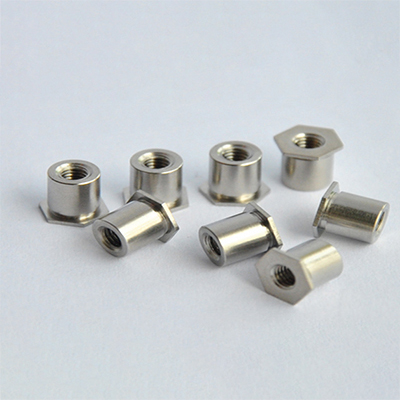Self-clinching Studs are fasteners designed for permanent installation in thin metal sheets. They are commonly used in sheet metal fabrication, electronics, and other industries where a strong, reliable, and flush-mounted fastener is required. These studs provide a threaded or unthreaded projection that serves as an anchor point for attaching components or joining materials. The self-clinching process involves pressing the stud into a properly sized hole in the metal sheet, causing the surrounding material to cold flow into the stud's grooves, creating a secure and durable connection.

To use self-clinching studs effectively, follow these steps:
1. Preparation: Ensure you have the appropriate self-clinching studs for your application. Consider factors such as material type, sheet thickness, stud size, and load requirements.
2. Hole Preparation: Drill or punch a hole in the metal sheet to match the stud's diameter. The hole should be slightly smaller than the stud's diameter to allow for a snug fit during installation.
3. Insertion: Place the self-clinching stud into the prepared hole, ensuring that the head of the stud is flush with the surface of the metal sheet.
4. Application of Force: Using a press or similar tool, apply a controlled axial force to the head of the stud. This force should be sufficient to embed the stud into the metal sheet without causing deformation or damage.
5. Cold Flow: As the force is applied, the material around the hole will cold flow into the grooves or serrations on the stud's shank. This forms a mechanical interlock, anchoring the stud securely in place.
6. Final Check: After installation, verify that the stud is firmly and securely attached to the metal sheet. Check for any visible gaps or irregularities.
7. Thread Engagement: If the stud is threaded, ensure that the threads are properly engaged and aligned for the intended application.
Self-clinching studs offer numerous advantages, including excellent load-bearing capabilities, resistance to vibration, and a clean, unobtrusive appearance. They eliminate the need for additional hardware such as nuts or washers, streamlining assembly processes and reducing overall costs.